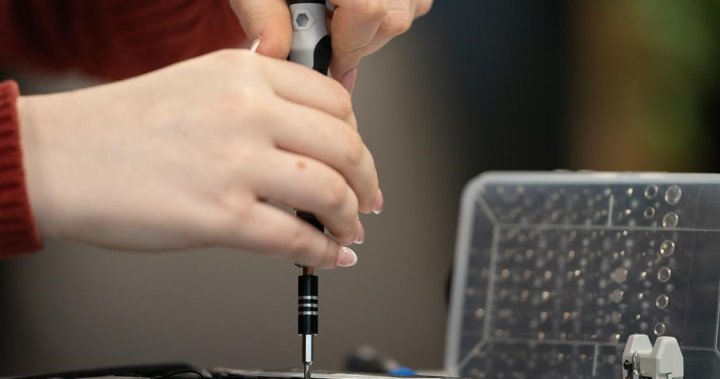The Repair Café Toronto, a volunteer-driven initiative, has spent over a decade breathing new life into broken household items, from toys to appliances. While they tackle a wide range of repairs, small appliances like kettles and toasters often present the biggest challenges due to their complex construction and manufacturers’ deliberate design choices that hinder repairability. This difficulty highlights a growing concern among right-to-repair advocates who believe consumers should have the right and ability to fix their own possessions or seek independent repair services. This movement is fueled by principles of ownership, cost savings, and environmental sustainability.
A key obstacle to repair is the intentional design of products by manufacturers. Components are often made from less durable materials, like plastic gears in hand mixers or weak electromagnets in toasters, leading to premature failure. This “built-to-fail” approach, coupled with limited access to repair manuals, tools, and parts, forces consumers to rely on manufacturers’ often expensive repair services or replace the item altogether. This practice not only generates substantial profits for manufacturers but also contributes to a growing e-waste problem. The limited repairability of everyday items extends beyond inconvenience; it impacts the economy, community skill development, and even individuals’ ability to perform essential tasks, especially concerning crucial equipment like wheelchairs and medical devices.
The lack of repairability is not merely a technical issue; it represents a systemic problem with far-reaching consequences. The artificial limitations imposed by manufacturers create a dependency on their services, driving up costs and hindering consumer autonomy. This dependency is often framed as a consequence of proprietary technology or specialized expertise, but critics argue that it is primarily driven by profit motives. For instance, a cracked smartphone screen often leads to a repair quote that is barely less than the cost of a new device, subtly nudging consumers towards replacement rather than repair.
In response to these challenges, the Canadian Repair Coalition, a non-profit advocacy group, has been pushing for legislative changes to empower consumers and independent repair businesses. Recent legislative victories include amendments to copyright laws allowing users to bypass technological protection measures for repair purposes and enabling the creation of interoperable computer programs and devices. While these are positive steps, they are only a starting point in a larger fight for comprehensive right-to-repair legislation.
Grassroots initiatives like the Repair Café Toronto provide a practical demonstration of the value and feasibility of repair, while some companies are beginning to respond to consumer pressure. Apple, for example, has announced a self-repair program offering parts, tools, and manuals to consumers. While this represents a shift in the company’s stance, the program has been criticized for its limited scope, high costs, and the fact that manufacturer repairs sometimes remain more economical. The true test of Apple’s commitment will be the accessibility and affordability of the program when it launches in Canada.
A more significant development is a proposed amendment to Ontario’s Consumer Protection Act. This bill would compel manufacturers of various products, including electronics, appliances, and medical equipment, to provide consumers and repair businesses with access to repair manuals, parts, software, and tools at a fair cost. This legislation, if passed, would represent a major victory for the right-to-repair movement and could serve as a model for other jurisdictions. Advocates also look to the European Union’s repairability scoring system as a valuable example, promoting transparency and empowering consumers to make informed decisions based on product lifespan and true cost of ownership. Ultimately, the right-to-repair movement aims to restore control to consumers, fostering a more sustainable and equitable marketplace. This movement champions the idea that ownership should include the right to maintain and repair, leading to a reduction in e-waste, greater economic independence for consumers, and the preservation of valuable repair skills within communities.

